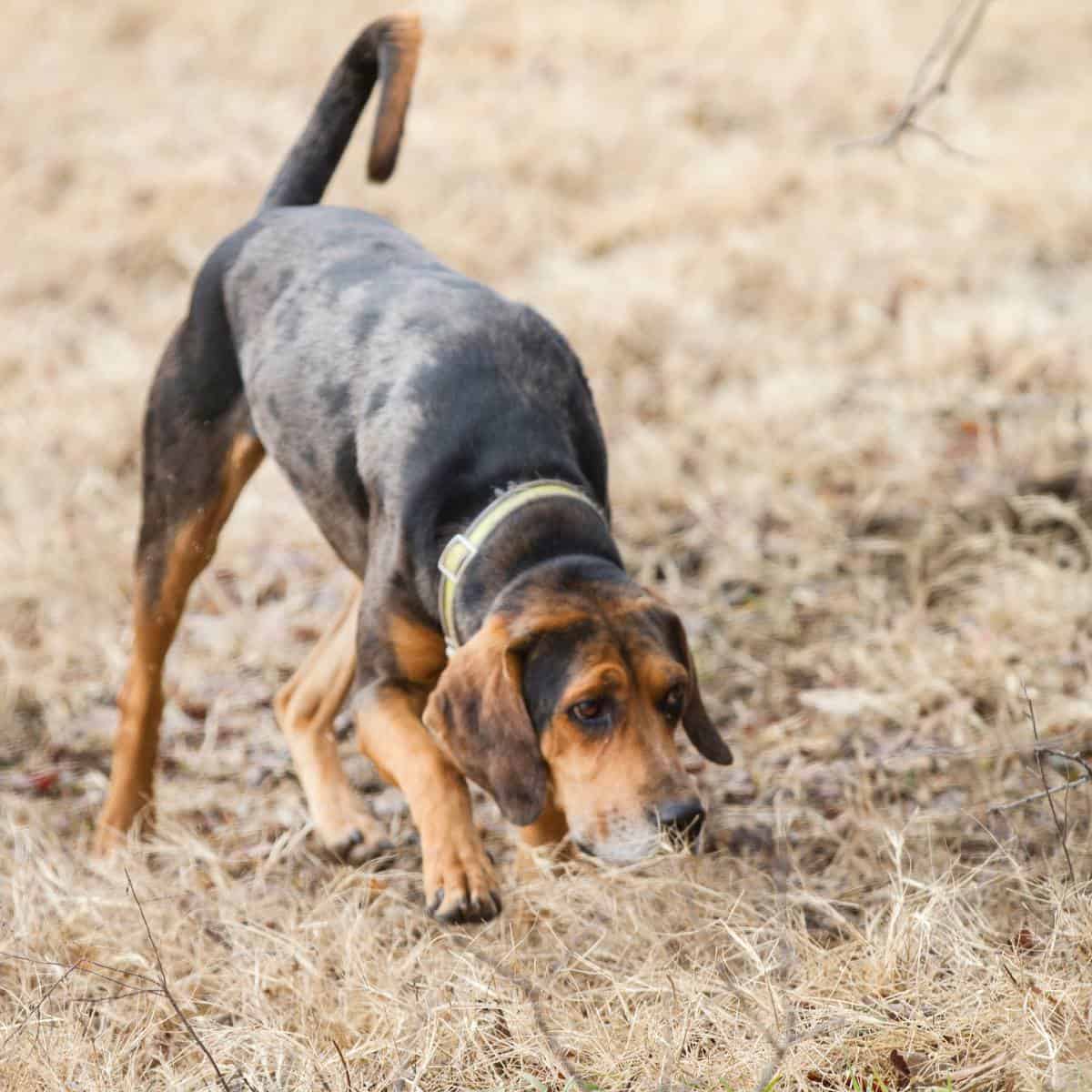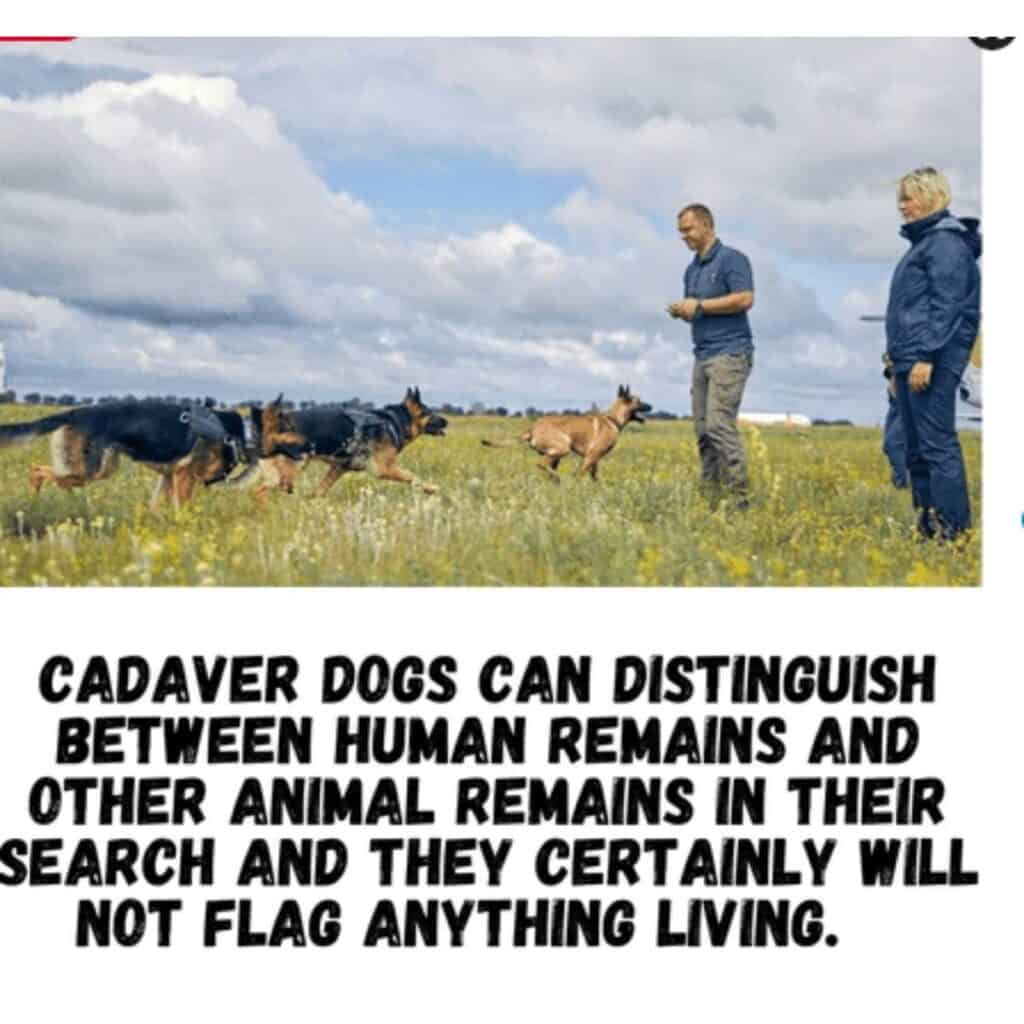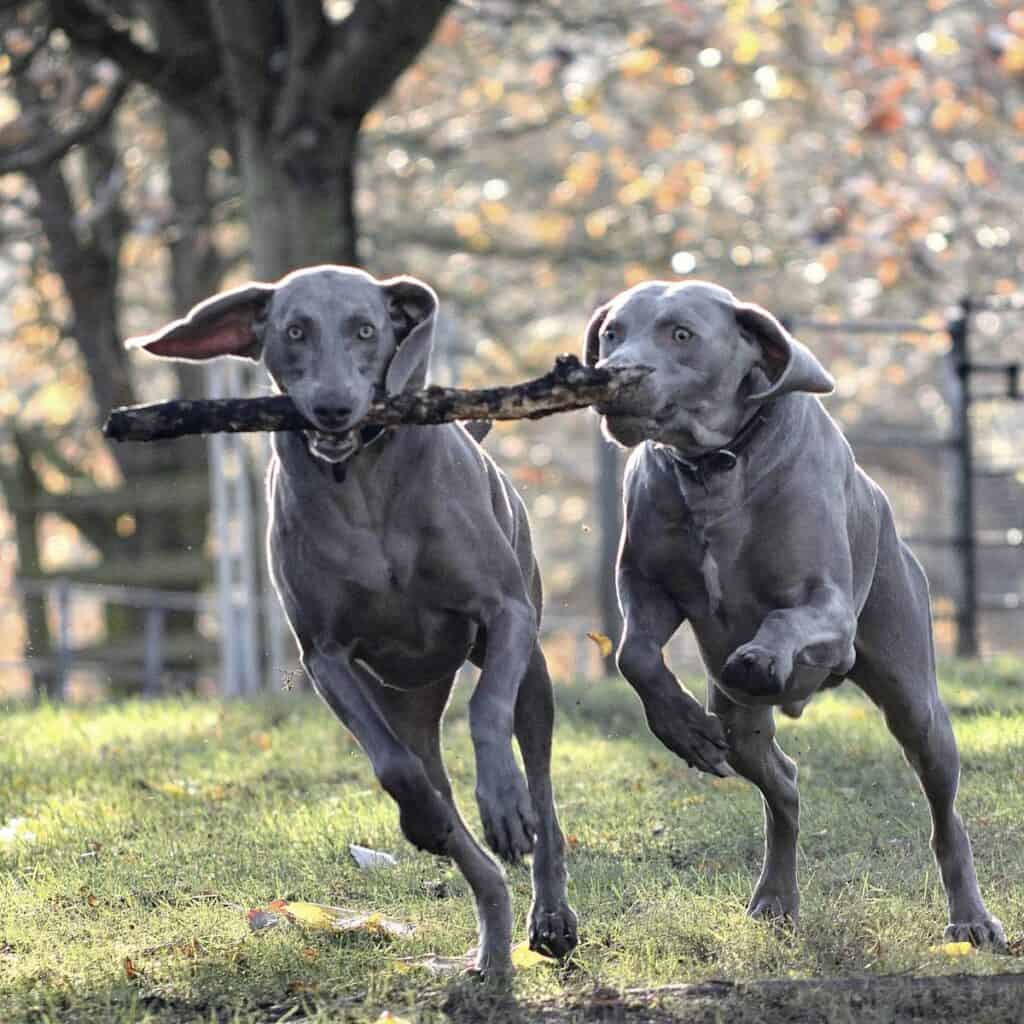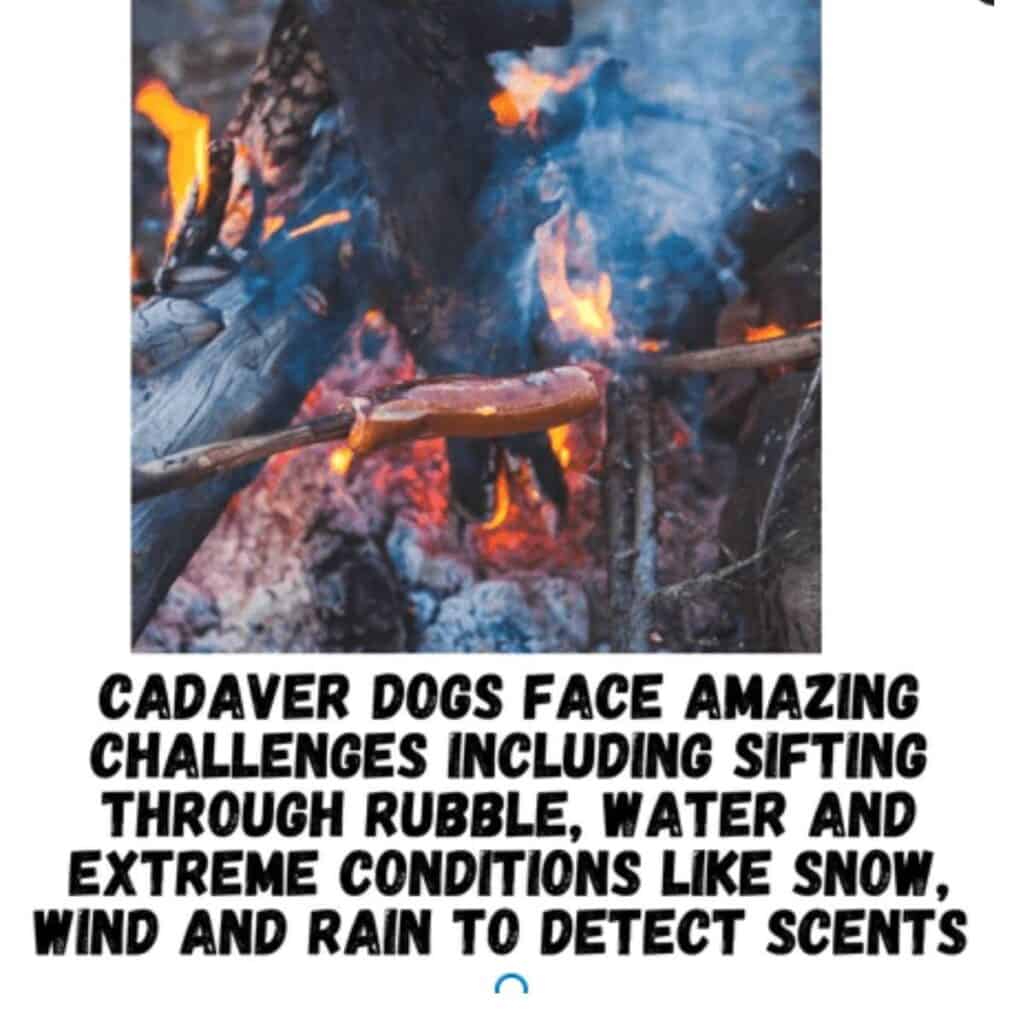If you have ever seen a human disaster on the news you can surely bet that a Cadaver dog had a role in the response. Cadaver dogs have supported us in so many ways that we may not even know so we decided to highlight them along with the many other dogs that are supporting us in our Amazing Dogs Series.

What is a Cadaver Dog?
Cadaver dogs, also known as human remains detection (HRD) dogs, are trained to detect and locate human remains. They’re trained to smell decomposition and can locate body parts, tissue, bones, and blood on land and water. Well-trained dogs help find the missing and dead in disasters, accidents, murders and suicides and even, today, archeologist sites.
Cadaver dogs are taught to perform their task by being exposed to many kinds and stages of decomposition during training. These training aids include human bone, blood, tissue, used gauze, liposuction material, teeth, and even pseudo-scent.
How accurate are cadaver dogs?
In most cases, cadaver dogs are 95% accurate. Researchers are learning ever more about the canine olfactory system, including what volatile organic compounds in human remains are significant to trained dogs, what concentration of human remains a trained dog can detect and what conditions are optimum for the preservation of smells. Added to that, a dog’s talent and utility depend on the skill of its handler.
Cadaver dogs are able to scan a large area of ground very quickly and find human remains with very high accuracy. These four-legged detectives can cover around 1.3 km daily, making them a huge asset to response teams in water and on land.
Amazingly, they can also distinguish between human remains and other animal remains in their search and they certainly will not flag anything living

Cadaver Dog Facts
Cadaver dogs play an important part in resolving many missing or deceased persons cases and providing closure and justice to grieving families.
Here are some amazing facts about these extraordinary canines.
- The exact numbers of cadaver dogs are hard to estimate. According to the American Rescue Dog Association, the United States has more than 500 volunteer-led dog search teams. However, there are no exact figures for law enforcement-owned cadaver dogs.
- Amazingly, cadaver dogs can also detect residue scents. That means they can identify crime scenes even if the body has since been moved. Cadaver dogs can tell if a body has been on a spot, even if it’s not there anymore. Cadaver dogs can pick up a scent within minutes of the death or decades later.
- Cadaver dogs can easily locate the burnt human remains that have been destroyed by fires.
- A cadaver dog can smell a human body that is buried up to 15 feet underground or 30 feet underwater. 15 feet underground is deeper than a standard grave!
- Cadaver dogs can easily detect the difference between human remains and animal remains. They can identify right away if the scent they’re picking up is from a person or animal. When searching forests, they won’t be distracted by any surrounding wildlife.
- Most dogs take approximately 18 months to two years to become fully-trained human remains detection (HRD) dogs. Cadaver dogs require around 1000 hours of extensive training before they are able to perform in the field.
As we discuss in our other articles on amazing dogs, including What Are Scent Detection Dogs Used For and Can Dogs Smell Cancer in Humans, The Latest Research, Dogs’ have an amazing sense of smell: Dogs have smell receptors 10,000 times more accurate than us. This means their nose can detect substances at concentrations of one part per trillion.
Dogs can detect a single drop of liquid in 20 Olympic-size swimming pools, revealed a scientific study conducted by scientists engaged by Medical Detection Dogs.
What Dog Breeds Are Cadaver Dogs?
There is no specific cadaver dog breed that is used. Dogs need to be smart, trainable, and willing to please.
The most common cadaver dog breeds are
- Labradors
- German Shepherds
- American Pit Bull Terriers
- Beagles
- Belgian Malinois
- Border Collies
- Coonhounds
- German Short Haired Pointers
- Golden Retrievers
- Nova Scotia Duck Tolling Retriever
Cadaver dogs are chosen for their amazing sense of smell and other traits rather than choosing based on breed alone.

The best cadaver canines are the ones with a keen sense of smell, good hunt drive, high working drive, intelligence, confidence, determination, and strong nerves.
What Do Cadaver Dogs Smell?
Since Cadaver dogs do not alert to living beings or other deceased animals researchers have tried to investigate what triggers cadaver dogs. They know that they smell tissue, blood and bone but there is a deeper trigger from those compounds that allows a cadaver dog to distinguish between alive and dead tissue, blood and bone.
Possible scents that Cadaver dogs smell include two byproducts of decomposition: putrescine and cadaverine. Even though these compounds are common to all decaying material, a well trained cadaver dog has such fine-tuned senses, it can differentiate between putrescine and cadaverine from human remains and most animals’. Additionally, Belgian researchers also isolated a compound, dimethyl sulfide, that trained dogs detect and accompanies putrefaction in many kinds of organic matter, including human.
Cadaver dogs use these compounds to locate bodies in nearly all recent disasters including the devastating fires in Colorado, major destructive hurricanes, including hurricane Katrina, important missing persons cases, where evidence from cadaver dogs has been deemed admissible in court, and the burial sites of mass executions, dating from World War II through the conflicts in the Balkans in the 1990s, and cadaver dogs have been used to help archeologists find truly ancient burials.
Cadaver dogs can face amazing challenges like the recent fires in Colorado, where post fire they sifted through blazes that were later covered with 8 inches of snow or in many hurricanes and tornadoes where they not only have to sift through debris and rubble but water and flood in extremely difficult conditions.

Final thoughts
Cadaver dogs are truly amazing dogs. They can detect recently dead victims, long-dead victims, and even drowned victims. For these smart four-legged detectives, death is just another scent, and tracking it down is just another game. Cadaver dogs are a huge asset to police, response teams, scientists and law enforcement agencies everywhere.
Do you think your dog has what it takes to be a Cadaver Dog?
Further resources: The Cadaver Dog Handbook is thought to be one of the ultimate resources for training a cadaver dog.
Check out more in our Amazing Dogs Series. Dogs that inspire us:
Amazing Dogs Series: 5 Amazing Livestock Guardian Dogs and their Jobs
Amazing Dog Series – The Complete Guide to Emotional Support Animals (Plus Handy Infographic comparison ESA to Service Dogs and Downloadable sample ESA letter)
Amazing Dogs Series: Amazing Jobs- Conservation Detection Dogs Jobs for Conservation Koala Detection
Ultimate Guide to Service Dogs
K9 Veterans and How They Serve and Charities That Support Them
Cadaver Dog FAQ
A cadaver dog picks up scents of a deceased person or animal after a disaster. A cadaver dog is part of an emergency response team to recover the deceased.
The amazing and useful thing is that dogs are able to pick up a scent within minutes of the death or even years after death. Cadaver dogs also work on archeology sites since in some studies, dogs have found 25-year-old skeletonized remains, buried in an area of 300 by 150 feet.
Cadaver dogs can smell humans and animals and distinguish between the two at all stages of decomposition. Cadaver dogs can be trained to detect whatever is needed.

